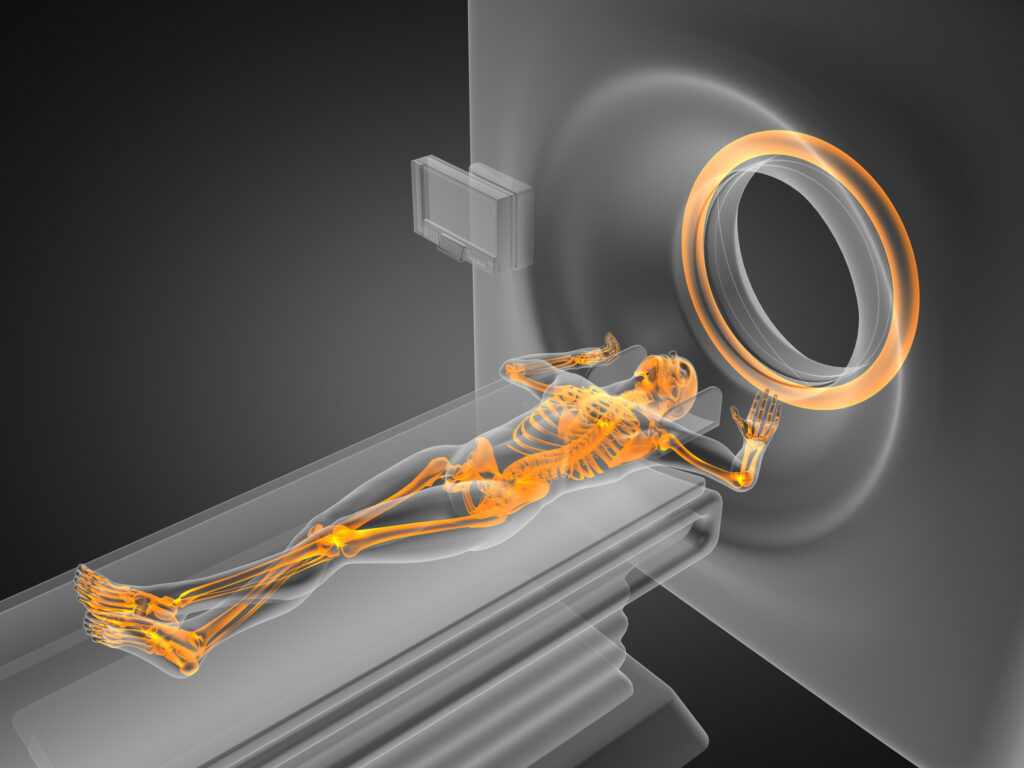Alpha particles, first discovered by Ernest Rutherford in the early 20th century, are a type of ionising radiation consisting of two protons and two neutrons. This article looks into the fundamental properties, sources, interactions, and applications of alpha particles while also addressing their impact on human health and the environment. Alpha particles play a crucial role in both natural and human-made processes, contributing significantly to scientific advancements and industrial applications.
Introduction to Alpha Particles
Alpha particles are a form of ionising radiation emitted from the decay of certain radioactive elements, notably heavy metals like uranium and radium. Each alpha particle comprises two protons and two neutrons, making it identical to the nucleus of a helium atom. Ernest Rutherford, who identified alpha particles while studying radioactive decay in the early 1900s, is credited with the discovery of alpha particles. This groundbreaking discovery laid the foundation for modern nuclear physics and expanded our understanding of atomic structure.
Properties of Alpha Particles
Alpha particles are characterised by their relatively large mass and positive charge, which influences their interactions with matter. They have a mass of approximately 4 atomic mass units (amu) and carry a charge of +2. This significant mass and charge mean that alpha particles are highly ionising but have low penetration power. They can be stopped by a sheet of paper or even the outer layer of human skin, making them less penetrating than beta particles or gamma rays.
The table below summarises the key physical properties of alpha particles:
| Property | Description |
| Composition | 2 protons and 2 neutrons (identical to a helium-4 nucleus) |
| Mass | Approximately 4 atomic mass units (amu) |
| Charge | +2 (positive charge) |
| Energy Range | Typically between 4 to 8 MeV (Mega-electron Volts) |
| Speed | Roughly 5% to 10% the speed of light |
| Penetration Power | Low; stopped by a few centimetres of air or a sheet of paper |
| Ionising Power | High; strong ionisation capability |
| Range in Air | A few centimetres |
| Range in Biological Tissue | A few micrometres (μm) |
| Biological Impact | Significant when internalised; can cause severe cellular damage |
| Detection Methods | Scintillation counters, solid-state detectors, Geiger-Müller counters with appropriate window materials |
This table provides a clear and concise overview of the physical properties of alpha particles, which are essential for understanding their behaviour and effects.
Sources of Alpha Particles
Alpha particles are naturally emitted from the decay of heavy, unstable isotopes such as uranium-238, thorium-232, and radium-226. These elements are commonly found in the Earth’s crust and contribute to natural background radiation. For instance, radon gas, a decay product of uranium, is a significant source of alpha particles. Radon is released from the ground and can accumulate in buildings, posing health risks if inhaled.
Artificial Sources
Human activities also produce alpha particles, particularly in the context of nuclear energy and weaponry. Nuclear reactors and certain types of medical treatments utilise isotopes that emit alpha particles. Additionally, industrial processes involving the use of radioactive materials, such as in the manufacture of smoke detectors and certain types of batteries, contribute to the presence of alpha particles.
Interactions of Alpha Particles with Matter
Due to their large mass and charge, alpha particles are highly effective at ionising atoms and molecules. As they travel through matter, they collide with electrons, knocking them out of their orbits and creating ions. This ionisation process is critical in various applications, such as radiation therapy, where alpha particles are used to damage cancerous cells.
Range and Stopping Power
The range of alpha particles in matter is relatively short. In air, they can travel only a few centimetres, while in denser materials like human tissue, their range is reduced to a few micrometres. This limited range is due to their high rate of ionisation, which rapidly dissipates their energy. The concept of stopping power refers to the ability of a material to attenuate the energy of alpha particles, effectively stopping them within a short distance.
Biological Effects
When alpha particles interact with biological tissues, they can cause significant damage due to their high ionising power. If alpha-emitting substances are inhaled, ingested, or enter the body through wounds, they can damage living cells and tissues. The primary concern is their potential to cause DNA damage, leading to mutations and possibly cancer. Thus, while alpha particles are not hazardous when outside the body, they pose significant risks when internal exposure occurs.
Applications of Alpha Particles
In medicine, alpha particles are utilised in targeted alpha therapy (TAT), a form of cancer treatment. TAT involves attaching alpha-emitting isotopes to molecules that specifically target cancer cells. When these isotopes decay, they release alpha particles that destroy the cancerous cells while sparing surrounding healthy tissue. This targeted approach enhances the efficacy of cancer treatment and reduces side effects.
Industrial Applications
Alpha particles find various industrial applications, particularly in the field of material science and quality control. For instance, they are used in smoke detectors, where americium-241, an alpha-emitting isotope, ionises the air in a detection chamber. When smoke enters the chamber, it disrupts the ionisation process, triggering the alarm. Additionally, alpha particles are employed in static eliminators and certain types of batteries.
Scientific Research
Alpha particles have been instrumental in scientific research, particularly in nuclear physics and chemistry. Rutherford’s gold foil experiment, which utilised alpha particles, was pivotal in the discovery of the atomic nucleus. Modern research continues to leverage alpha particles in studying nuclear reactions, material properties, and radiation effects.
Health and Environmental Impact
The primary health risk associated with alpha particles arises from internal exposure. If alpha-emitting substances are inhaled, ingested, or enter the bloodstream, they can deposit high levels of ionising radiation in tissues. This can lead to cellular damage, mutations, and increased cancer risk. Radon exposure is a notable concern, as it is a leading cause of lung cancer among non-smokers.
Environmental Impact
Alpha-emitting isotopes can also impact the environment. Mining and processing of uranium and other radioactive materials can release alpha particles into the environment, contaminating soil and water. These isotopes can persist for long periods, posing long-term environmental hazards. Proper management and disposal of radioactive waste are crucial to mitigate these impacts.
Detection and Measurement
Due to their low penetration power, detecting alpha particles requires specialised equipment. Common detection methods include scintillation counters, which measure the flashes of light produced when alpha particles interact with certain materials, and solid-state detectors, which measure the ionisation caused by alpha particles. Geiger-Müller counters can also be adapted for alpha detection with appropriate window materials.
Measurement Techniques
Accurate measurement of alpha radiation is essential for ensuring safety in various settings. Techniques include using dosimeters to assess personal exposure, employing environmental monitoring systems to detect radon levels, and utilising laboratory methods to analyse samples for alpha-emitting isotopes. These measurements help assess radiation levels and implement protective measures.
Mitigation and Protection
Several strategies are employed to mitigate the risks associated with alpha particles. In buildings, radon mitigation involves improving ventilation and sealing cracks to prevent radon accumulation. In occupational settings, strict controls and protective equipment are used to limit exposure to alpha-emitting materials. Proper disposal and containment of radioactive waste are also critical to prevent environmental contamination.
Protective Measures
Protective measures against alpha particle exposure include using personal protective equipment (PPE) such as gloves and masks, implementing engineering controls to contain sources of alpha radiation, and following safety protocols to minimise the risk of internal contamination. Education and training for workers handling radioactive materials are essential to ensure safety and compliance with regulations.
Conclusion
With their unique properties and interactions, Alpha particles play a significant role in natural and human-made processes. Alpha particles have profoundly influenced various fields, from their discovery by Rutherford to their applications in medicine, industry, and scientific research. Understanding their properties, sources, and effects is crucial for harnessing their benefits while mitigating the associated risks. Continued research and advancements in detection and mitigation technologies will further enhance our ability to safely utilise alpha particles in various applications.
Q&A on Alpha Particles
Q1: What are alpha particles?
A1: Alpha particles are a type of ionising radiation consisting of two protons and two neutrons, making them identical to the nucleus of a helium-4 atom.
Q2: Who discovered alpha particles?
A2: Alpha particles were discovered by Ernest Rutherford in the early 20th century during his studies on radioactive decay.
Q3: What is the mass of an alpha particle?
A3: An alpha particle has a mass of approximately 4 atomic mass units (amu).
Q4: What is the charge of an alpha particle?
A4: An alpha particle carries a charge of +2 due to its two protons.
Q5: How much energy do alpha particles typically have?
A5: Alpha particles typically have energy levels ranging from 4 to 8 Mega-electron Volts (MeV).
Q6: How fast do alpha particles travel?
A6: Alpha particles travel at speeds roughly between 5% to 10% of the speed of light.
Q7: How far can alpha particles penetrate?
A7: Alpha particles have low penetration power; they can be stopped by a sheet of paper or a few centimetres of air. In biological tissue, they can travel only a few micrometres.
Q8: Why are alpha particles highly ionising?
A8: Due to their relatively large mass and positive charge, alpha particles are highly effective at ionising atoms and molecules as they travel through matter, creating ions by knocking electrons out of their orbits.
Q9: What are the primary natural sources of alpha particles?
A9: Alpha particles are naturally emitted from the decay of heavy, unstable isotopes like uranium-238, thorium-232, and radium-226, commonly found in the Earth’s crust.
Q10: What are some artificial sources of alpha particles?
A10: Artificial sources include nuclear reactors, certain types of medical treatments, and industrial processes involving radioactive materials, such as the manufacture of smoke detectors and specific batteries.
Q11: How do alpha particles affect human health?
A11: Alpha particles can cause significant damage if they enter the body through inhalation, ingestion, or wounds, leading to cellular damage and an increased risk of cancer, especially from radon exposure.
Q12: How are alpha particles detected?
A12: Detection methods include scintillation counters, solid-state detectors, and Geiger-Müller counters with appropriate window materials designed to detect the ionisation caused by alpha particles.
Q13: What are the uses of alpha particles in medicine?
A13: In medicine, alpha particles are used in targeted alpha therapy (TAT) for cancer treatment, where alpha-emitting isotopes target and destroy cancerous cells while sparing healthy tissue.
Q14: What industrial applications involve alpha particles?
A14: Industrial applications include smoke detectors (using americium-241), static eliminators, and specific types of batteries.
Q15: What are some environmental concerns related to alpha particles?
A15: Environmental concerns include the release of alpha-emitting isotopes from mining and processing radioactive materials, which can contaminate soil and water, posing long-term hazards.
Q16: How can exposure to alpha particles be mitigated?
A16: Mitigation strategies include improving ventilation to reduce radon levels, using protective equipment in occupational settings, and ensuring proper disposal and containment of radioactive waste.
Q17: What measures are taken to protect against alpha particle exposure?
A17: Protective measures include personal protective equipment (PPE) such as gloves and masks, engineering controls to contain sources of alpha radiation, and following strict safety protocols to minimise the risk of internal contamination.
This Q&A format provides clear and direct answers to common questions about alpha particles, covering their properties, sources, interactions, applications, and safety considerations.
Disclaimer
The information provided in this article is for general educational and informational purposes only. While Open Medscience has made every effort to ensure the accuracy and reliability of the content, it is not intended to replace professional advice, guidance, or training in radiological science, health physics, or related disciplines.
Open Medscience does not assume responsibility for any loss, injury, or damage incurred as a result of the use or misuse of the information contained herein. The discussion of medical and industrial applications of alpha particles is presented for illustrative purposes and should not be interpreted as an endorsement or recommendation for specific products, procedures, or treatments.
Any individual or organisation working with ionising radiation, including alpha-emitting materials, must adhere to all applicable safety regulations, legal requirements, and best practice protocols established by relevant authorities and governing bodies.
For specific concerns regarding radiation safety, health risks, or environmental impact, readers should consult qualified professionals or regulatory agencies.
You are here: home » diagnostic medical imaging blog »



